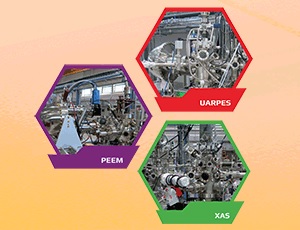
The SOLARIS synchrotron call for proposals will be opened from 1 March. At the moment, three end-stations are available at the SOLARIS synchrotron: PEEM (photoelectron microscopy), XAS (X-ray absorption spectroscopy) and UARPES (angle-resolved photoelectron spectroscopy), which can be used for research in the field of solid-state physics, chemistry, semiconductor physics, and new electronic materials.
The beamtime will be granted to researchers on a competitive basis from October 2019 to February 2020. The proposals will be evaluated by an international commission.<
It is strongly recommended that the feasibility of planned experiments is discussed with the beamline supervisor prior to the submission of a proposal. The access to SOLARIS is free of charge for all non-proprietary research. User groups from outside Poland may apply for reimbursement of travel expenses (thanks to CALIPSOPlus project).
After the first call for proposals, 26 experiments were carried out, while following the second call, the SOLARIS Centre received 24 applications. The majority of them were submitted by scientists affiliated to Polish universities and research institutions: the AGH University of Science and Technology, the Jerzy Haber Institute of Catalysis and Surface Chemistry PAS, the Institute of Physics PAS, the Jagiellonian University, the University of Silesia, the University of Rzeszów, the University of Warsaw, and the University of Wrocław. Five international applications came from Spain, Italy, Estonia, Slovakia, and Austria. The first research article including the results of measurements carried out in SOLARIS has already been published in the prestigious Nature Research journal Scientific Reports.
More information about applying for beamtime is available at this link.

